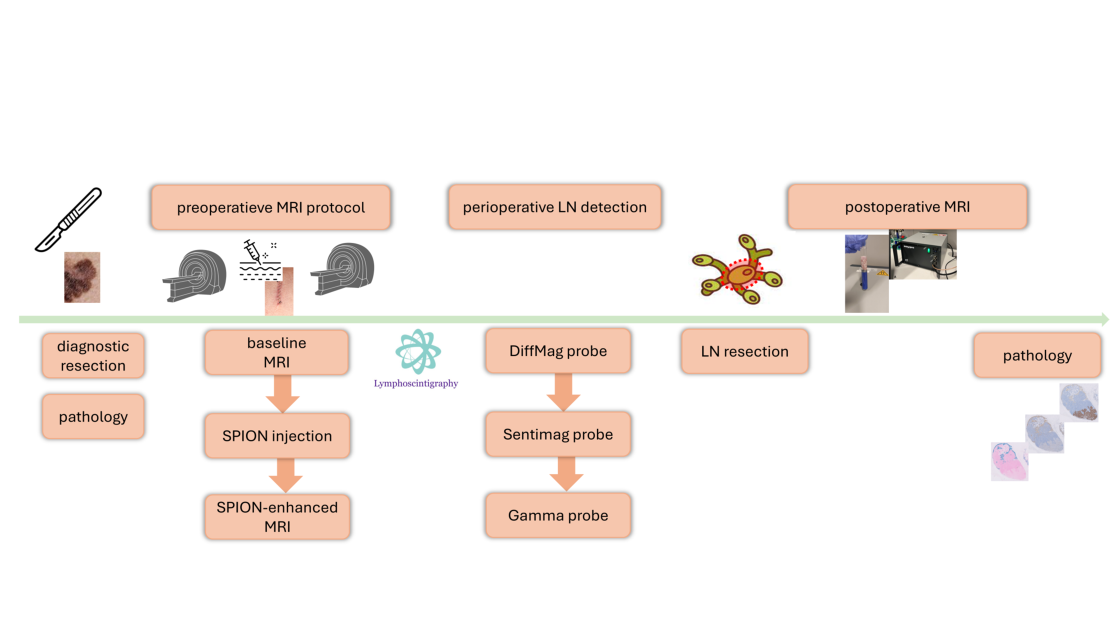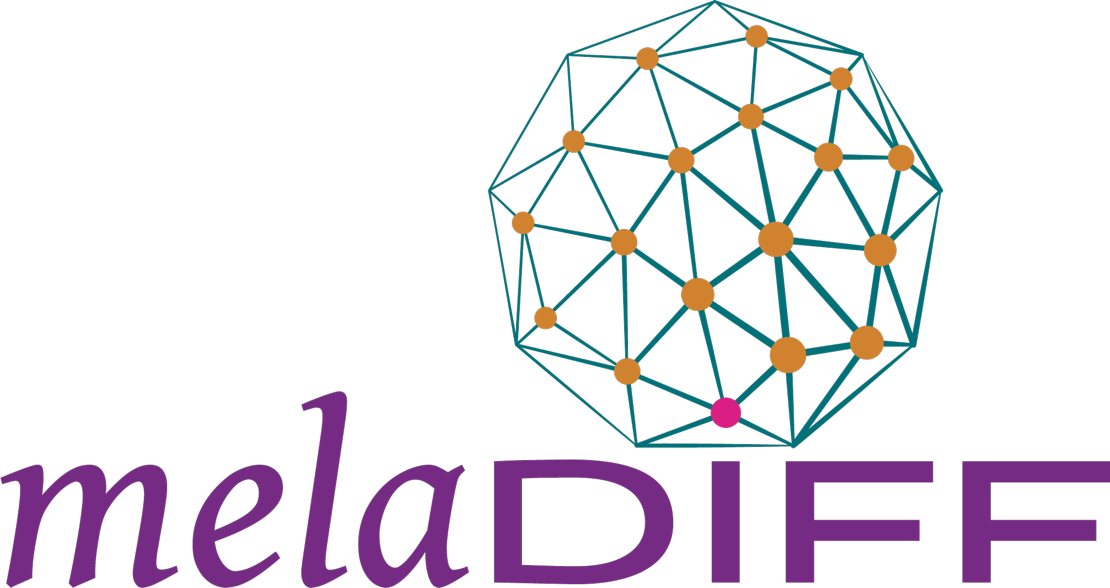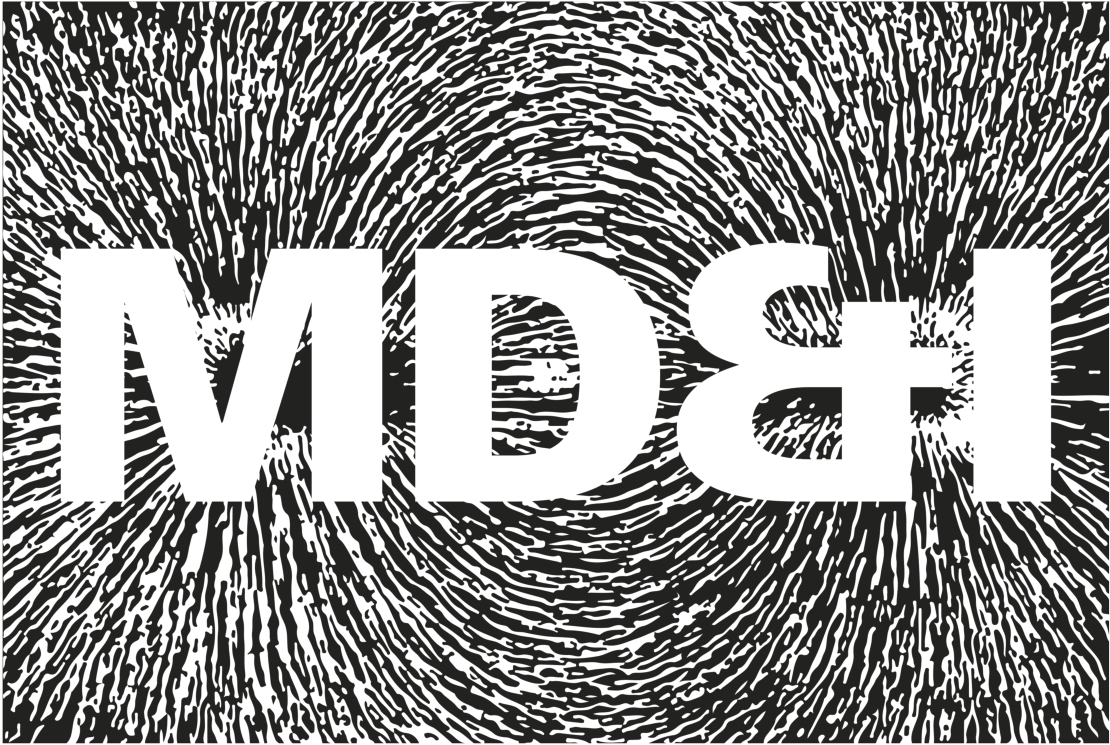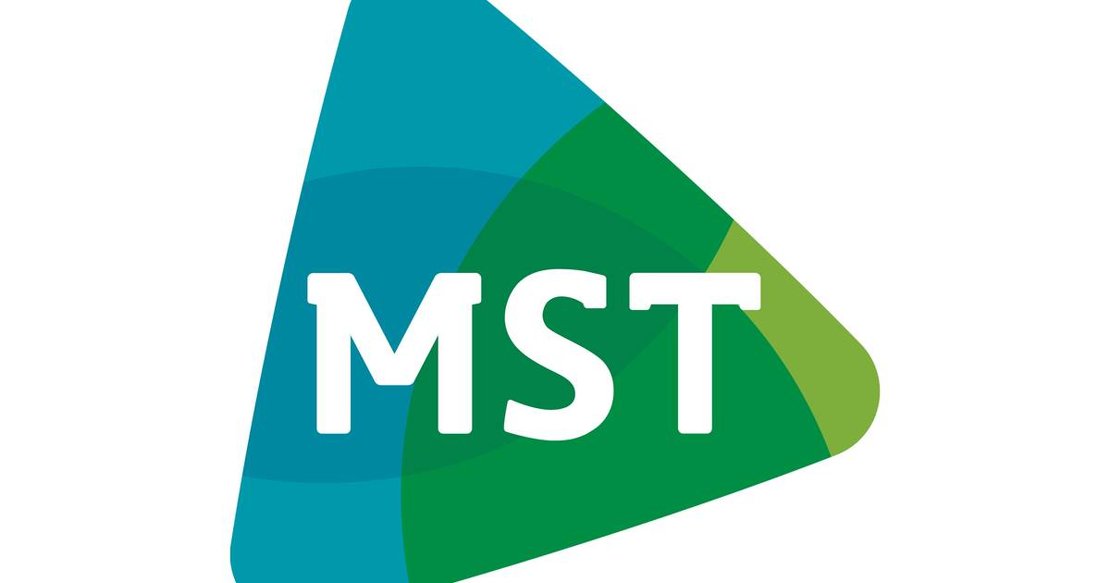|
|
|
|
Melanoma is an aggressive form of skin cancer that originates from malignant melanocytes, with UV exposure being a leading risk factor due to its genotoxic effects. Additional risk factors include the presence of melanocytic nevi, family history, and genetic predisposition. Melanoma is known for its high metastatic potential, making later-stage diagnoses more challenging to treat and often leading to poor outcomes for patients with metastatic disease.
Standard treatment for stage II melanoma typically involves surgical re-excision and evaluation of nodal status through a Sentinel Lymph Node Biopsy (SLNB). SLNB is essential for accurate staging, as the presence of metastatic cells in regional lymph nodes serves as the most critical prognostic factor for disease-free survival and helps guide decisions on adjuvant therapies. The SLNB procedure combines tracer detection using a handheld device with surgical removal and histopathological evaluation of the lymph nodes.
Magnetic SLNB, facilitated by super paramagnetic iron-oxide nanoparticles (SPIO), offers various clinical advantages. The DiffMag device, patented by the MD&I group at the University of Twente, uses the nonlinear magnetic response of SPIO nanoparticles and forms the basis of the handheld DiffMag device for magnetic SLNB.
Trial details
melaDIFF is a multi-centre trial evaluating the feasibility and usability of the handheld DiffMag magnetometer for localizing sentinel lymph nodes in melanoma patients during SLNB procedures. The study also explores the potential of lymph node mapping and staging through preoperative SPION-enhanced MRI and ex vivo SPION-enhanced MRI of resected lymph nodes.

Additional Information
The melaDIFF project is funded by the PIHC grant at the University of Twente
For additional details, visit the CCMO-site or reach out to:
Related trials
Publications Clinical
Publications à DiffMag
Publications à SPaQ





